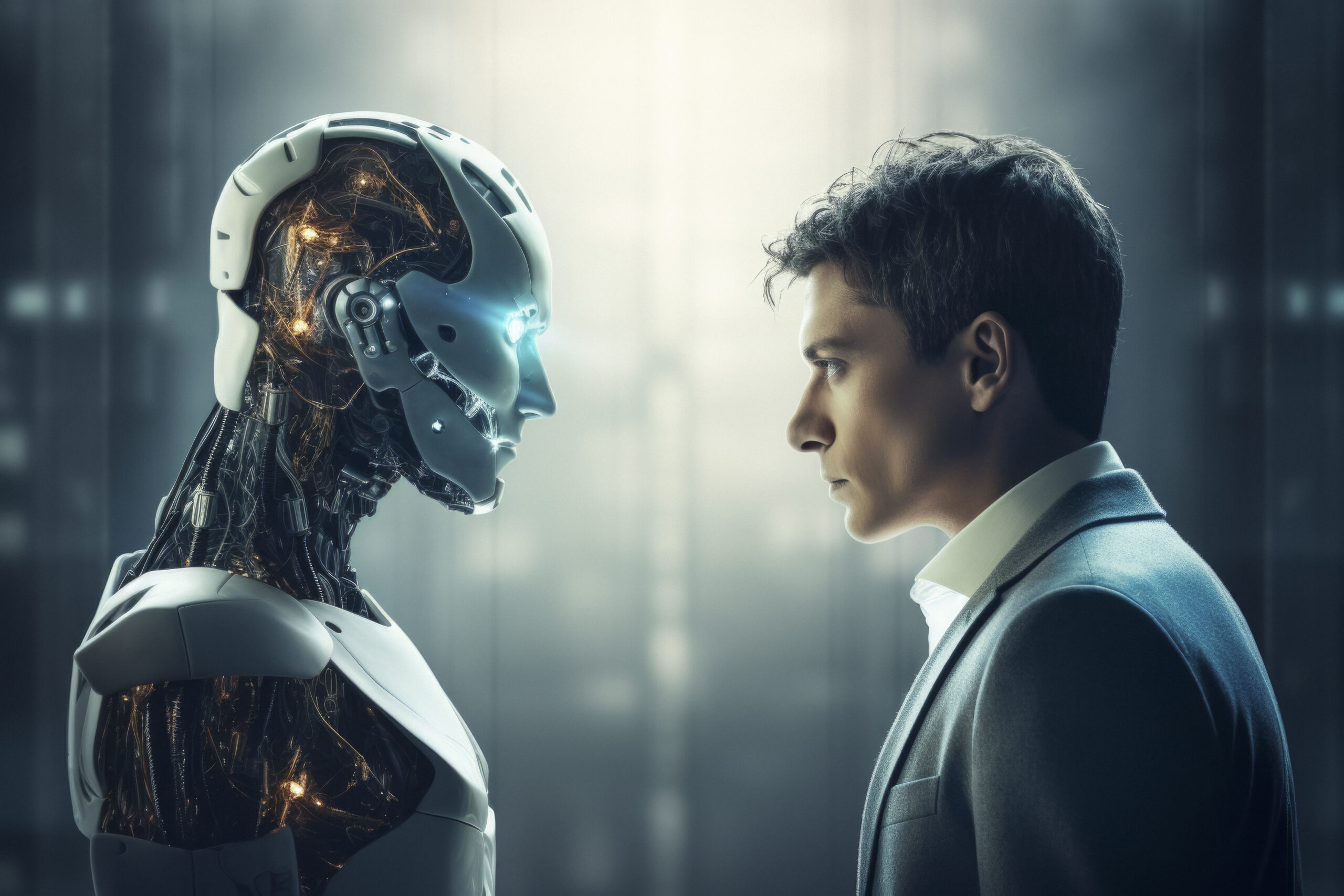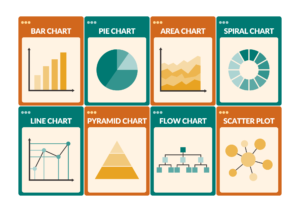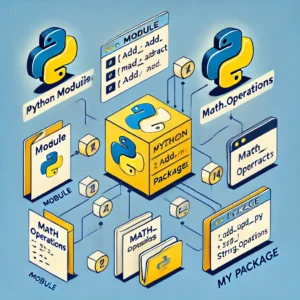The Difference : Deep Learning Vs Machine Learning Introduction
Artificial Intelligence (AI) has become one of the most transformative technologies of the 21st century, influencing nearly every industry and facet of life. At the core of AI are two key concepts: Machine Learning (ML) and Deep Learning (DL). Both of these fields have made significant advances in allowing machines to perform tasks that traditionally required human intelligence, but they do so using different techniques and with varying levels of complexity.
This article will delve into the fundamental differences between deep learning and machine learning, explore their applications, and provide insights into how each technique is shaping the future of AI.
What is Machine Learning?
Machine learning is a subset of AI that focuses on building systems capable of learning from data. Instead of explicitly programming a machine to perform a specific task, ML allows the system to “learn” from the data, identify patterns, and make decisions or predictions based on those patterns.
Core Components of Machine Learning
Machine learning is often broken down into three primary types:
- Supervised Learning: In supervised learning, the model is trained on a labeled dataset, meaning each data point is paired with an associated label. The model learns the mapping between inputs and the correct output. For example, in a house price prediction model, the input data could include features like the size of the house and the number of bedrooms, while the label would be the actual price of the house.
- Unsupervised Learning: Unsupervised learning works with unlabeled data, and the model is tasked with identifying hidden patterns or structures within the data. An example would be clustering customers into different segments based on purchasing behavior, without knowing ahead of time what those segments might be.
- Reinforcement Learning: This approach involves an agent learning to make decisions by interacting with an environment. The agent takes actions and receives feedback (rewards or punishments) from the environment. The goal is to maximize cumulative rewards over time. A classic example is a self-learning game-playing AI, such as AlphaGo.
How Machine Learning Works
Machine learning models typically follow these steps:
- Data Collection: Gather large amounts of data related to the problem at hand.
- Feature Engineering: Select the relevant features or variables from the data that will help the model make predictions.
- Model Training: Use algorithms like decision trees, support vector machines, or logistic regression to train the model on the data.
- Model Testing: Evaluate the performance of the model using unseen data.
- Tuning and Optimization: Adjust model parameters and features to improve performance.
The performance of a machine learning model largely depends on the quality of the data and the feature engineering process, as these steps involve a lot of human intervention.
What is Deep Learning?
Deep learning is a specialized subfield of machine learning that is based on artificial neural networks. These neural networks, particularly when they consist of many layers, are designed to mimic the structure and function of the human brain. This allows deep learning models to automatically learn representations from raw data, such as images, text, and audio, with minimal human intervention.
Core Components of Deep Learning
- Artificial Neural Networks (ANNs): Deep learning models are built on neural networks, which are collections of nodes (neurons) that are interconnected in layers. The neurons in the network process and transform the input data and pass it through multiple layers to learn complex features.
- Multilayer Perceptrons (MLPs): MLPs are a type of fully connected neural network where every neuron in one layer is connected to every neuron in the next layer. However, this structure can become computationally expensive for large datasets and complex tasks.
- Convolutional Neural Networks (CNNs): CNNs are specifically designed for tasks involving image and video data. They use convolutional layers to extract features from images, such as edges, textures, and shapes, making them highly effective for computer vision tasks.
- Recurrent Neural Networks (RNNs): RNNs are designed to handle sequential data, such as time series data or natural language. They retain information from previous inputs in the sequence, making them suitable for tasks like speech recognition and language translation.
- Transformers: Transformers are a more recent architecture that excels in natural language processing tasks. Unlike RNNs, they do not process data sequentially, making them more efficient for training on large datasets. The success of models like BERT and GPT is largely attributed to transformers.
How Deep Learning Works
Deep learning involves the following steps:
- Data Collection: Gather large amounts of raw data, such as images, text, or audio files.
- Data Preprocessing: Prepare the raw data for the neural network, such as resizing images or tokenizing text.
- Model Architecture Selection: Choose the appropriate neural network architecture based on the problem (e.g., CNN for images, RNN for sequential data).
- Model Training: Train the model on vast amounts of data using backpropagation and optimization techniques like stochastic gradient descent (SGD).
- Hyperparameter Tuning: Adjust parameters like the number of layers, learning rate, and batch size to optimize performance.
Deep learning models often require massive amounts of data and computational power but can outperform traditional machine learning methods in tasks like image recognition, speech processing, and language translation.
Key Differences Between Deep Learning and Machine Learning
While both deep learning and machine learning aim to build models that can make predictions or decisions based on data, they differ in several key ways:
1. Feature Engineering:
- Machine Learning: Most machine learning models require manual feature engineering, where human experts define and select the most important features of the data. For example, in a machine learning model designed to predict house prices, an expert might choose features like square footage, number of rooms, and location.
- Deep Learning: Deep learning models can automatically learn relevant features from raw data without the need for manual intervention. In an image classification task, for instance, a deep learning model will learn to identify important patterns like edges and textures in images, while a traditional ML model would require hand-engineered features.
2. Data Requirements:
- Machine Learning: Machine learning models typically perform well with smaller datasets. However, they may struggle with tasks that involve unstructured data like images, video, or text.
- Deep Learning: Deep learning models require significantly more data to train effectively. They excel in handling large datasets, especially those containing unstructured data. For example, training a deep learning model to recognize faces may require thousands or even millions of labeled images.
3. Model Interpretability:
- Machine Learning: Machine learning models, especially simpler algorithms like decision trees or logistic regression, are easier to interpret. You can trace how the model arrived at its decisions by examining the importance of different features or variables.
- Deep Learning: Deep learning models, particularly those with many layers, are often seen as “black boxes” because their decision-making processes are difficult to interpret. Understanding why a neural network makes certain predictions can be challenging, especially in fields like healthcare or finance where interpretability is crucial.
4. Training Time:
- Machine Learning: Machine learning models generally take less time to train, especially on smaller datasets. Training times are influenced by factors like the complexity of the model and the size of the dataset.
- Deep Learning: Training deep learning models can be time-consuming, especially when dealing with very large datasets and complex architectures. These models often require specialized hardware, such as GPUs or TPUs, to speed up training.
5. Computational Power:
- Machine Learning: Most machine learning algorithms can be run on standard hardware, such as a laptop or desktop computer. They are less computationally demanding than deep learning models.
- Deep Learning: Deep learning models are computationally expensive and typically require powerful hardware, including GPUs (Graphics Processing Units) or TPUs (Tensor Processing Units), for efficient training and inference.
6. Applications:
- Machine Learning: ML is well-suited for tasks like predictive modeling, where structured data is involved. Applications include credit scoring, customer segmentation, and recommendation systems.
- Deep Learning: DL shines in areas where unstructured data is involved. Applications include image and video processing, natural language processing, autonomous driving, and even game-playing AI.
Real-World Applications of Machine Learning
Machine learning has found widespread applications across various industries. Here are some key examples:
1. Fraud Detection in Banking:
Machine learning models are used by banks and financial institutions to detect fraudulent transactions. By analyzing historical transaction data, these models can flag anomalous behavior that may indicate fraud. For example, if a customer who normally makes small local purchases suddenly makes a large international transaction, the ML model could flag this as suspicious and trigger further investigation.
2. Recommendation Systems:
Companies like Amazon and Netflix use machine learning to power their recommendation engines. These systems analyze user behavior, such as purchase history or viewing habits, to suggest products or content that the user is likely to be interested in. For example, Netflix uses ML to recommend movies or TV shows based on what a user has previously watched.
3. Predictive Maintenance:
In manufacturing, machine learning models are used to predict when equipment or machinery is likely to fail. By analyzing sensor data and historical maintenance records, these models can predict failures before they happen, allowing companies to perform maintenance proactively and reduce downtime.
4. Spam Detection:
Email providers use machine learning models to classify emails as either spam or legitimate messages. These models are trained on large datasets of labeled emails and use features like subject lines, sender information, and content to
make predictions about whether an email is spam.
Real-World Applications of Deep Learning
Deep learning has enabled breakthroughs in areas that were once considered impossible for machines to tackle. Here are some key examples:
1. Image Recognition:
Deep learning models, particularly convolutional neural networks (CNNs), have revolutionized the field of image recognition. These models can identify objects, faces, and even diseases from medical images with incredible accuracy. For example, deep learning models are used in medical imaging to detect tumors, classify skin lesions, and diagnose diseases like pneumonia from X-rays.
2. Autonomous Driving:
Self-driving cars rely heavily on deep learning models to interpret data from cameras, LIDAR, and other sensors. These models help the vehicle recognize objects like pedestrians, traffic signs, and other vehicles, and make real-time decisions about how to navigate the road safely. Companies like Tesla and Waymo have invested heavily in deep learning for autonomous driving.
3. Natural Language Processing (NLP):
Deep learning models have significantly advanced natural language processing tasks, including language translation, sentiment analysis, and chatbots. Transformer-based models like GPT (Generative Pretrained Transformer) have enabled machines to generate human-like text and engage in meaningful conversations. Google Translate and virtual assistants like Siri and Alexa use deep learning to understand and respond to voice commands.
4. Healthcare and Drug Discovery:
Deep learning is playing a vital role in healthcare, especially in areas like drug discovery and personalized medicine. Models trained on massive datasets of medical records and genetic information can predict how patients will respond to different treatments, enabling personalized care. In drug discovery, deep learning is used to identify potential drug candidates by analyzing chemical structures and simulating how they interact with biological targets.
The Future of Deep Learning and Machine Learning
Both machine learning and deep learning are continuing to evolve, with exciting advancements on the horizon.
1. Federated Learning:
A growing trend in machine learning is federated learning, where models are trained across decentralized devices while keeping data localized. This allows for improved privacy and data security, making it ideal for industries like healthcare and finance.
2. Self-Supervised Learning:
Self-supervised learning is an emerging area in deep learning that seeks to reduce the need for large amounts of labeled data. This technique allows models to learn representations from unlabeled data, making them more efficient and scalable.
3. Quantum Machine Learning:
As quantum computing advances, it holds the potential to accelerate machine learning and deep learning models. Quantum machine learning combines the principles of quantum computing with AI to solve complex problems more efficiently than classical computers.
4. Ethical AI and Interpretability:
As deep learning models become more powerful and pervasive, there is growing concern about their ethical implications. Ensuring that these models are interpretable, transparent, and free from bias will be critical to their continued adoption.
Conclusion
While both machine learning and deep learning aim to enable machines to learn from data and make decisions, they differ in terms of complexity, data requirements, and the types of tasks they are best suited for. Machine learning is ideal for structured data and tasks that require interpretable models, while deep learning excels in handling large-scale, unstructured data like images, video, and text.
As AI continues to evolve, the distinction between machine learning and deep learning will blur, with hybrid approaches combining the best of both worlds. Understanding when to use each technique will be essential for businesses and researchers looking to harness the power of AI to solve real-world problems.




